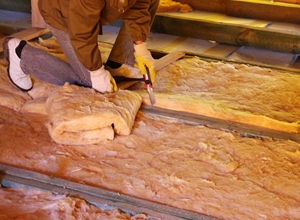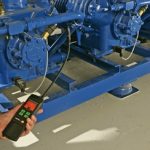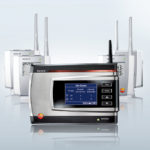As Australian homeowners battle through the coldest part of the year, this is the time when residents begin to feel the cold spots and discuss their options with professionals.
If the house is old, then it is potentially poorly insulated that can lead to long-term health issues. While residents will probably only feel the cold during the night, a US university study believes tradespeople could use an infrared thermometer or imager to gauge whether insulation is needed or not.
In the report titled ‘Infiltration Levels Using an Infrared Thermometer’, University of North Dakota researchers Carl Pedersen and Kenneth Hellevang explain that 50 per cent of a home’s energy consumption comes from heating and cooling.
For builders and tradespeople tasked with reducing heating costs and installing insulation, it is important to use the right tools to identify areas that are below recommended levels and seek out those air leaks into and out of the house.
Mr Pedersen and Mr Hellevang said that as well as physically checking wall cavities, technology is available to ensure the homeowner is left with a warm and cosy house.
“A simple way to determine if more insulation is needed is to compare the inside temperature of an exterior wall versus an interior wall in the same room using an infrared thermometer,” the researchers said.
“If the difference is large…the wall probably has a low R-value (insulation amount) and more insulation would be recommended.”
Options for industry
Having the right tools for the job will ensure that your business is seen as an industry leader within the community. With competition within the building industry fierce, Testo can make sure that you are well equipped to complete projects to a high standard.
The testo 870-1 Affordable Thermal Imager is perfectly for building and heating constructors for detecting leakages as well identifying cold bridges within the walls. This imager has a wide field of view so professionals can clearly see heat streams and ensure the insulation is effective.
Demand for quality insulators
It will be important for building professionals to access the right equipment to manage the increasing demand for insulation and energy efficient homes.
According to a recent study from Grand View Research, the Asia-Pacific market is set to play a critical role in the expected USD$67.16 billion insulation market by 2020. Worldwide, Asia-Pacific is the leading regional market for insulation and accounted for 41.8 per cent of the revenue last year.
This is thanks to the emerging real estate scenario, particularly in Australia. Demand is growing for new energy efficient homes and homeowners with older houses are identifying ways that they can save money. To be part of the growing trend, building professionals will need to access equipment such as thermal imagers to keep up with jobs as well as remaining ahead for their competition.
Tips for industry
Using tools like thermal imagers during the insulation process requires workers to know the equipment inside out. Any mistakes identifying or misidentifying potential leaks and heat problems can be costly for the business as well as the homeowner.
For this reason, University of North Dakota researchers have several simple tips for industry professionals using infrared thermal imagers or thermometers.
“To obtain the most accurate reading, the thermometer should be within 1 to 3 feet of the surface,” Mr Pedersen and Mr Hellevang said.
“The thermometer does not actually measure the temperature of the exact spot where the laser beam hits, but an average temperature of the area surrounding the beam.”
Options available
For professionals requiring a tool like this, the testo 830 T1 – Infrared Thermometer is one option. The small device with an accurate laser is perfect for marking heat leakages. The thermometer will signal, with an alarm, that a limit indicating a problem has been detected.









 Reduce cooking oil costs while ensuring quality
Reduce cooking oil costs while ensuring quality Expert knowledge on CO2 monitoring
Expert knowledge on CO2 monitoring Refrigeration knowledge - in 3 modules
Refrigeration knowledge - in 3 modules



